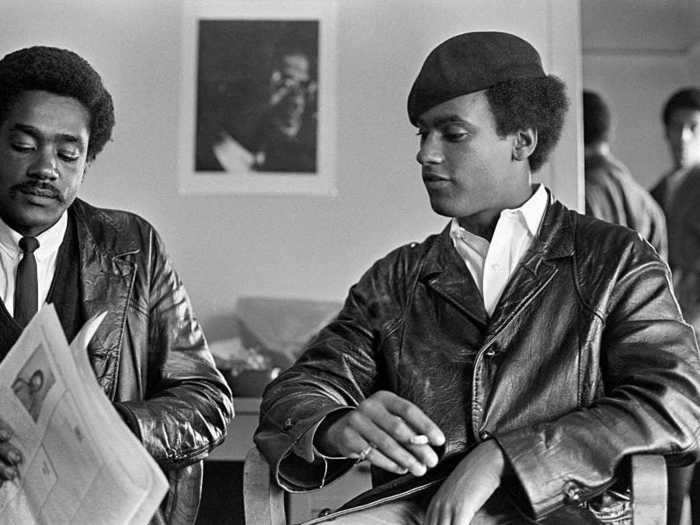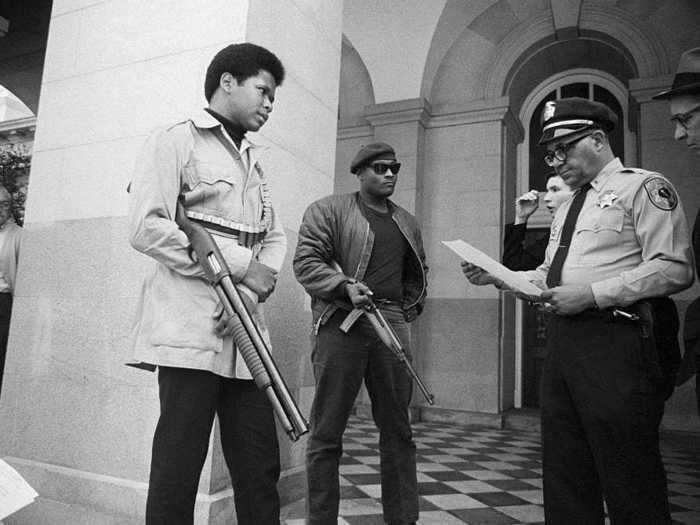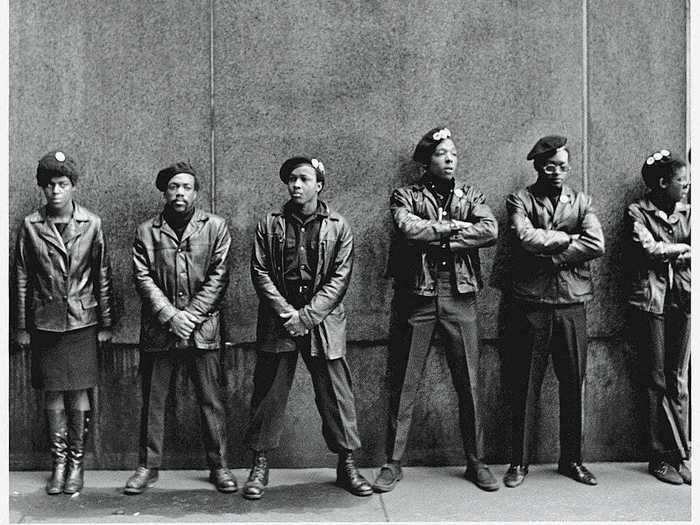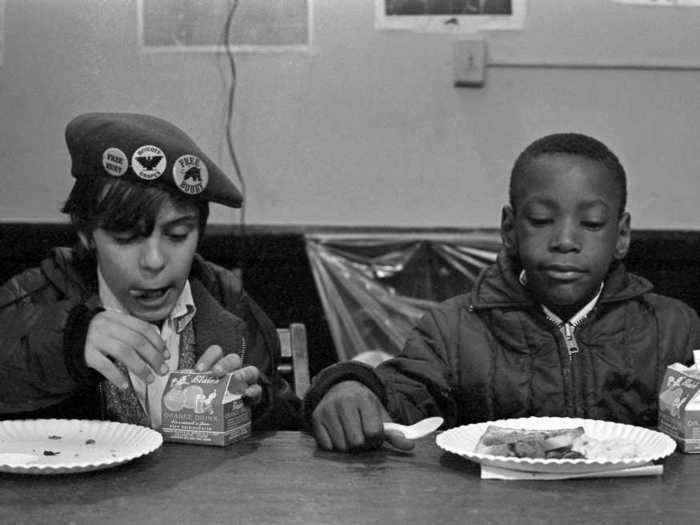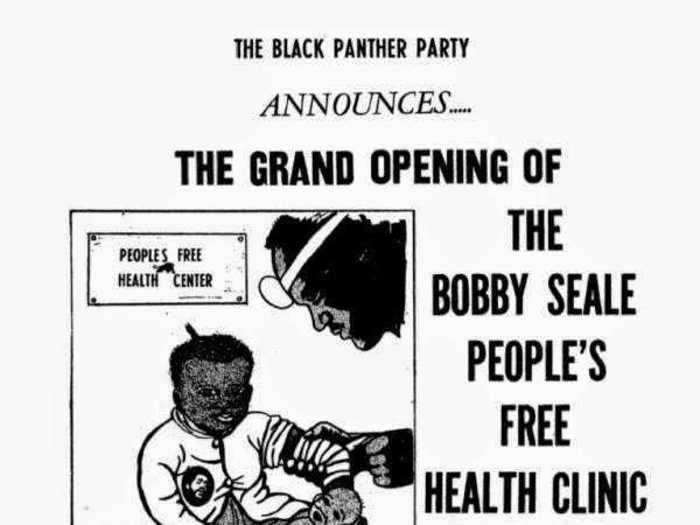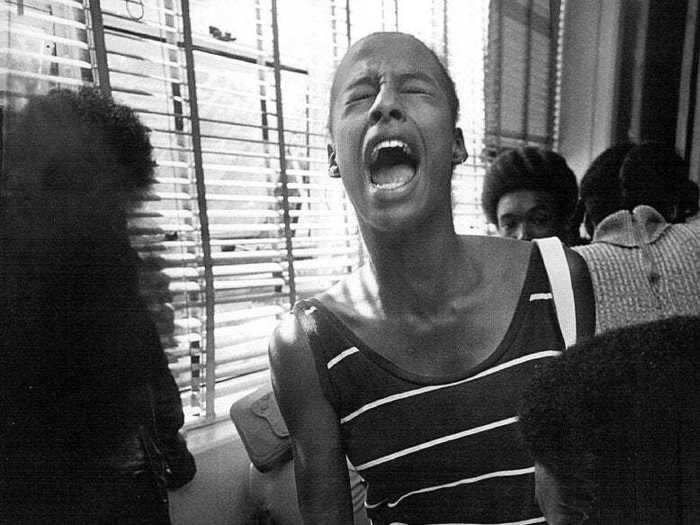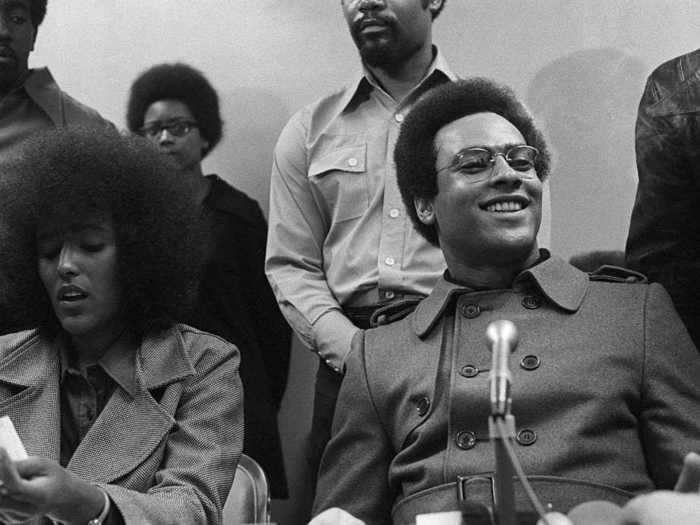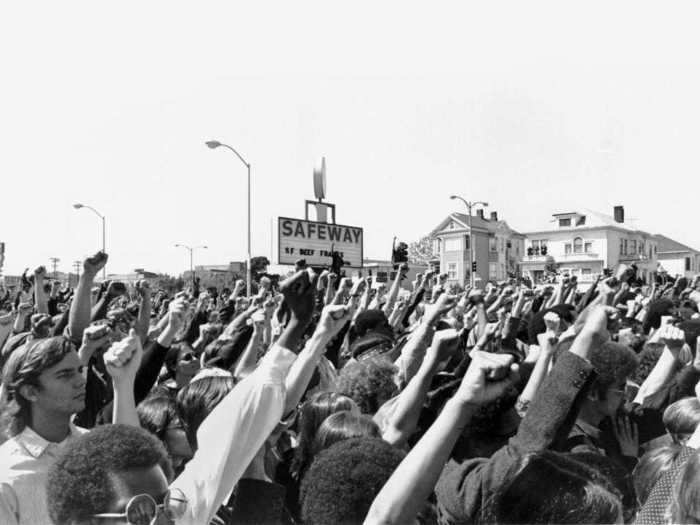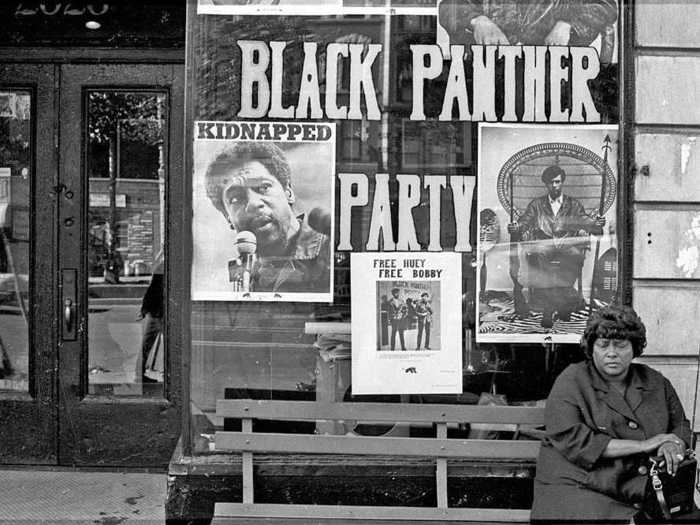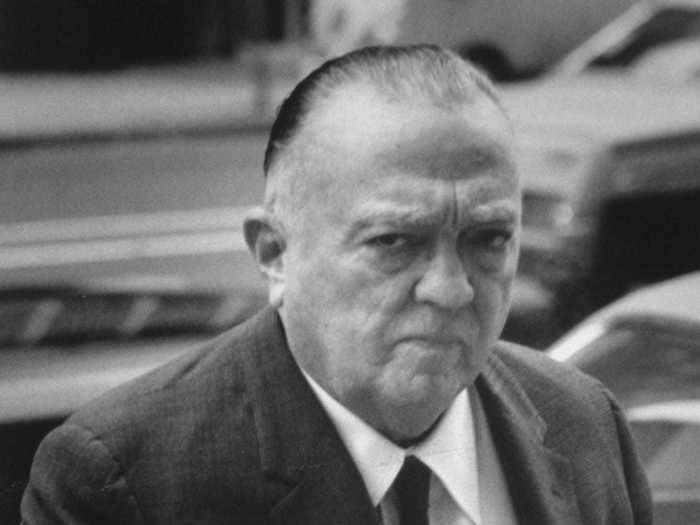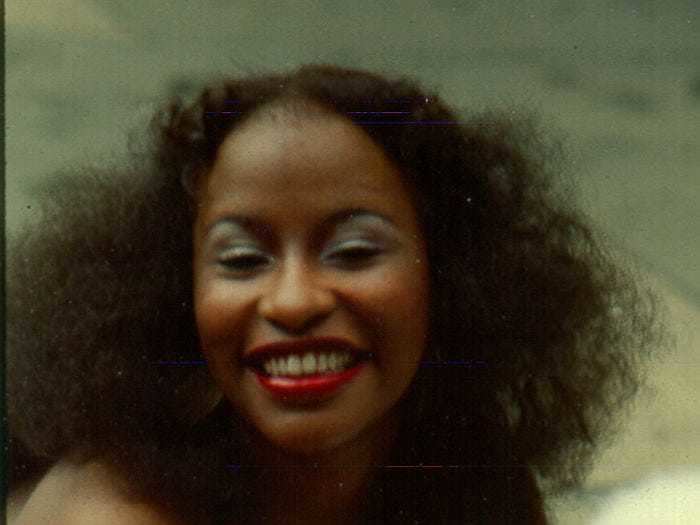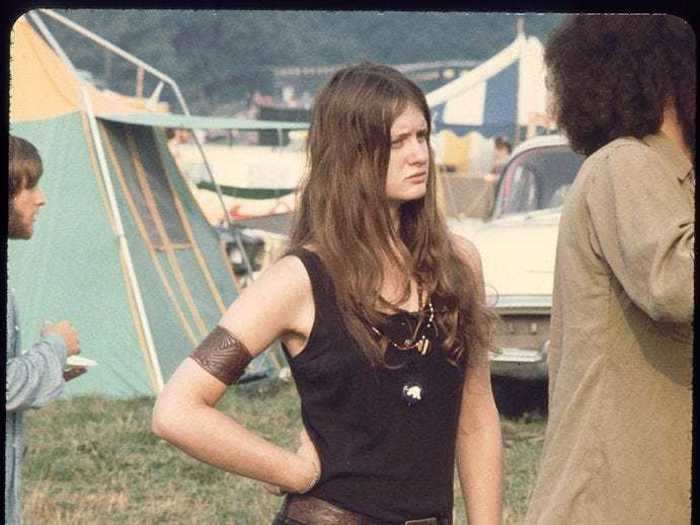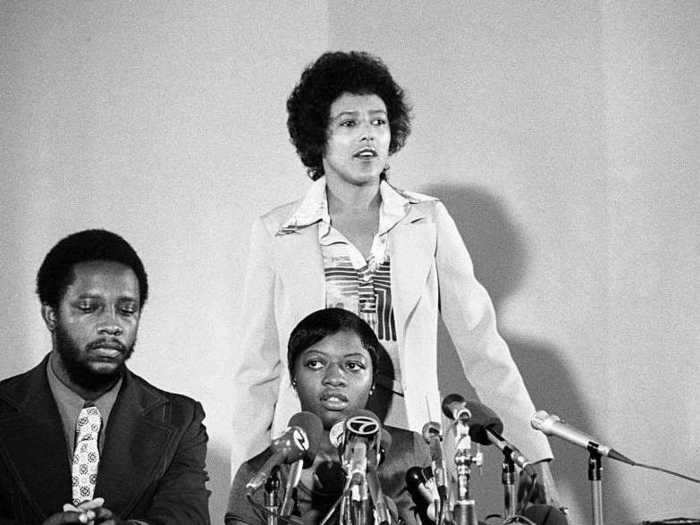Black Panther Party members protesting in New York City on April 11, 1969.David Fenton/Getty Images
- The Black Panther Party was founded in 1966 by Huey Newton and Bobby Seale.
- It advocated for Black liberation and combated police brutality with armed patrols known as "copwatching."
- There were violent encounters with cops and accusations of gang activity. J. Edgar Hoover said the BPP "represents the greatest threat to the internal security of the country."
- The BPP also launched dozens of social programs including free breakfasts and medical clinics.
- Learn more about the untold history of the Black Panther Party.
The Black Panther Party was one of the most influential grassroots political forces of the 20th century.
Founded by Huey Newton and Bobby Seale in 1966, the Panthers eschewed civil disobedience in favor of armed shows of force, particularly to confront police violence.
The BPP was controversial from the start: There were shootouts with police, murders, and accusations the Party was a front for drug-dealing, prostitution, and extortion.
But the BPP's belief in Black self-determination fueled dozens of social programs benefiting tens of thousands, including free-breakfast programs and no-cost medical clinics.
Eventually, the Party opened "liberation schools," where children learned Black history and political science. They practiced penmanship by writing letters to incarcerated members.
At its height, the BPP had thousands of members in nearly 70 cities. In-fighting, FBI infiltration, and other factors led to the group's decline, and the Panthers officially dissolved in 1982.
In the wake of the killing of George Floyd, the call against police brutality has gone out again.
Learn more about the untold history of the Black Panther Party
The Black Panther Party was formed in response to the killing of an unarmed Black teen by police.
Huey Newton (right) with Bobby Seale at Black Panther Party headquarters in San Francisco in 1967.
Ted Streshinsky/CORBIS/Corbis via Getty Image
On September 27, 1966, a police officer shot Matthew Johnson, an unarmed 16-year-old, in the back in San Francisco's Hunters Point neighborhood, sparking violent unrest for several days.
Huey Newton decided the only way to address police brutality was to monitor the authorities. He read up on California's open-carry laws and, within weeks, had armed men patrolling the streets of Oakland.
If they saw an arrest, they would approach with their firearms visible and inform the suspects of their rights. The practice came to be known as "copwatching."
California repealed its open-carry law because of the Panthers.
Two members of the Black Panther Party are stopped by police on the steps of the California State Capitol in Sacramento, on May 2. 1967.
Bettmann
In the late 1960s, photographs of visibly armed Black men panicked conservatives.
In April 1967, California State Assemblyman Don Mulford introduced a ban on carrying loaded firearms in public. Weeks later, a group of armed Panthers barged into the State Assembly in Sacramento to protest.
The Mulford Act was soon passed by a large majority and signed into law by then-Governor Ronald Reagan.
"There is no reason why, on the street today, a citizen should be carrying loaded weapons," Reagan said at the time. "Guns are a ridiculous way to solve problems than have to be solved among people of good will."
They chose black leather jackets and berets as their uniform because they were easy to find.
A line of Black Panther Party members outside a New York City courthouse on April 11, 1969.
David Fenton/Getty Images
According to Stanley Nelson, director of "The Black Panthers: Vanguard of the Revolution," Huey Newton and Bobby Seale chose the Panthers' look because "it was something that everybody had in their closet."
"They said, 'You know, every young black man has a black leather jacket or can get one or can borrow one if they can't buy one," he told Fresh Air's Terry Gross."Everybody could get a beret. Everybody could get some sunglasses and get the Panther look."
The uniform was also calculated to be distinct from the suit-and-tie look favored more traditional civil-rights activists.
They developed a free school-breakfast program that fed thousands of children every day.
Two boys in 1969 at a free breakfast for children program in New York City sponsored by the Black Panther Party.
Bev Grant/Getty Images
In 1969, the Black Panther Party began serving free hot breakfasts to kids in Oakland, soliciting food from local grocers and consulting nutritionists on healthy and filling recipes.
The Free Breakfast for School Children Program eventually expanded to 45 cities and fed tens of thousands of kids, according to History.com.
Schools and parents praised it, but the police and FBI spread rumors the BPP was using the meals to indoctrinate or even poison kids.
In 1975, just as the BPP's breakfast programs were being shut down, the USDA permanently authorized the nationwide School Breakfast Program, which fed more than 14 million children in 2016 alone.
The Black Panthers opened free medical clinics and ambulance services.
A poster advertising the Bobby Seale People's Free Health Clinic.
National Archives
After the success of its free-breakfast programs, the BPP addressed the imbalance in America's healthcare system by opening no-cost health clinics in 13 cities.
People's Free Medical Centers offered vaccinations, checkups, cancer screenings, and more in storefronts and trailers. They were staffed by doctors and trained volunteers.
When a Black teen in Winston-Salem, North Carolina, died because an ambulance refused to take him to the hospital, the Panthers converted an old hearse into a free ambulance service.
They created the first nationwide testing and screening program for sickle cell anemia.
A young girl grimaces as she gets a blood test for sickle-cell anemia, in 1972.
Dave Buresh/The Denver Post via Getty Images
First identified in 1910, sickle cell anemia attracted little scholarship or funding because it primarily affected people of African descent.
The Panthers established a national screening program, training volunteers to go door-to-door in predominantly Black neighborhoods and give free fingerstick tests. Followup care for anyone who tested positive was arranged with local hospitals.
The Panthers' high profile campaign put pressure on President Nixon to sign legislation that funded sickle cell research and clinics in 1972.
Huey Newton took a delegation to China, where he met Premier Zhou Enlai.
Huey Newton (right) at a press conference in San Francisco after returning from a meeting with Chinese Premier Zhou Enlai in China.
Bettmann
Huey Newton was heavily influenced by Chinese revolutionary Mao Zedong, and even sold copies of the Little Red Book to buy guns.
Mao's philosophy appealed to the BPP because, as Eveline Chao wrote in ChinaFile,, "it made Marxism, which otherwise seemed like something for the white New Left, applicable to people of color."
In 1971, Huey Newton and Elaine Brown flew to Beijing and met with Premier Zhou Enlai and Mao's wife, Jiang Qing.
They were met by throngs of cheering young people at the airport, waving copies of the Little Red Book and signs that read "We support the Black Panther Party, down with U.S. imperialism."
They helped migrant workers organize against Safeway.
A Black Panther rally against Safeway in Oakland, California, circa 1969.
Harold Adler/Underwood Archives/Getty Images
In the early 1970s, Cesar Chavez's United Farm Workers union boycotted Safeway in California for selling grapes picked by non-union workers.
Safeway, coincidentally, was one of the few markets to refuse to donate to the Panthers' free-breakfast program.
Seizing the opportunity, the BPP began ferrying shoppers to competing Lucky's supermarkets free of charge.
The boycott was successful enough that at least one Safeway in Oakland was forced to close.
The Black Panthers taught self-defense classes to senior citizens.
A woman sits on a bench outside the Black Panther offices in Harlem, circa 1970.
Michael Ochs Archives/Getty Images
The Black Panthers launched Seniors Against A Fearful Environment (SAFE) after a group of older Oakland residents asked them to teach them self-defense to fend off muggers.
The seniors had originally approached the police for help but were told to just "walk close to the curb," according to the Atlanta Black Star.
The SAFE program also provided free transportation so older locals could deposit their social security and pension checks.
FBI director J. Edgar Hoover called the Black Panthers "the greatest internal threat to the security of the country."
FBI Director J. Edgar Hoover in 1970.
The Life Images Collection/Getty Images
Hoover used a special counterintelligence program, COINTELPRO, to discredit party leaders.
Agents sent letters to members' wives accusing them of infidelity, according to Historian Thomas J. Reed, "to terrorize and divide the Black Panthers into warring factions."
Newton and others alleged the FBI arranged the assassination of BPP member Fred Hampton in December 1968.
Hoover terminated COINTELPRO in 1971 after its undercover activities were exposed by The Washington Post and other outlets.
Chaka Khan was once a member of the Black Panthers.
Chaka Khan, circa 1970.
Michael Ochs Archives/Getty Images
The singer, born Yvette Stevens, was recruited by the Panthers to sell newspapers in 1969, when she was just 14.
"I was totally against all the sock hops and shit my school had to offer to keep the natives quiet. We used to call them 'slave gatherings,'" she told The Guardian in 2019. "So, I had my combat boots on, my green khaki pants. I didn't feel in danger – it wasn't like that. We were doing the right thing."
She became disillusioned with the party, though, when she was given a gun.
"I'm telling you, every moment I had that gun it changed me," she said. "I felt physically sick." Khan said she didn't feel better until she threw the .38 in a pond.
There was a White Panthers Party.
A female member of the White Panthers at Woodstock in 1969.
Ralph Ackerman/Getty Images
When reporters asked Huey Newton what white allies could do to support the Black Panthers, he said they could form their own party.
In 1968, former MC5 manager John Sinclair launched the White Panther Party as an anti-racist political collective.
That same year, Sinclair and Pun Plamondon were indicted for conspiracy to destroy a CIA branch office. The case brought to light the government's extensive wiretapping of Black Panther offices, according to the San Francisco Bay View.
In a landmark decision, the Supreme Court ruled that warrantless wiretapping was a violation of the Fourth Amendment.
A woman led the Black Panther Party for four years.
Elaine Brown (standing) at a Black Panther Party press conference on August 22, 1975.
Bettmann/Getty Images
When Panther leader Huey Newton fled to Cuba after being charged with murder, he appointed Elaine Brown the party's new chair.
It was a revolutionary move, challenging the group's entrenched sexism.
A woman in charge "was the violation of some Black Power principle that was left undefined," Brown wrote in her 1992 memoir, "A Taste of Power." "I knew I would have to muster something mighty to manage the Black Panther Party."
As leader, Brown focused on community service, education, and politics. She managed Lionel Wilson's successful bid to become Oakland's first Black mayor.
After Newton's return in 1977, Browns stepped down and soon broke ties with the Panthers. She alleged Newton authorized the beating of another female member.
The vicious attack, she wrote in her memoir, sent a signal "denoting an inferiority in the female half of us."

